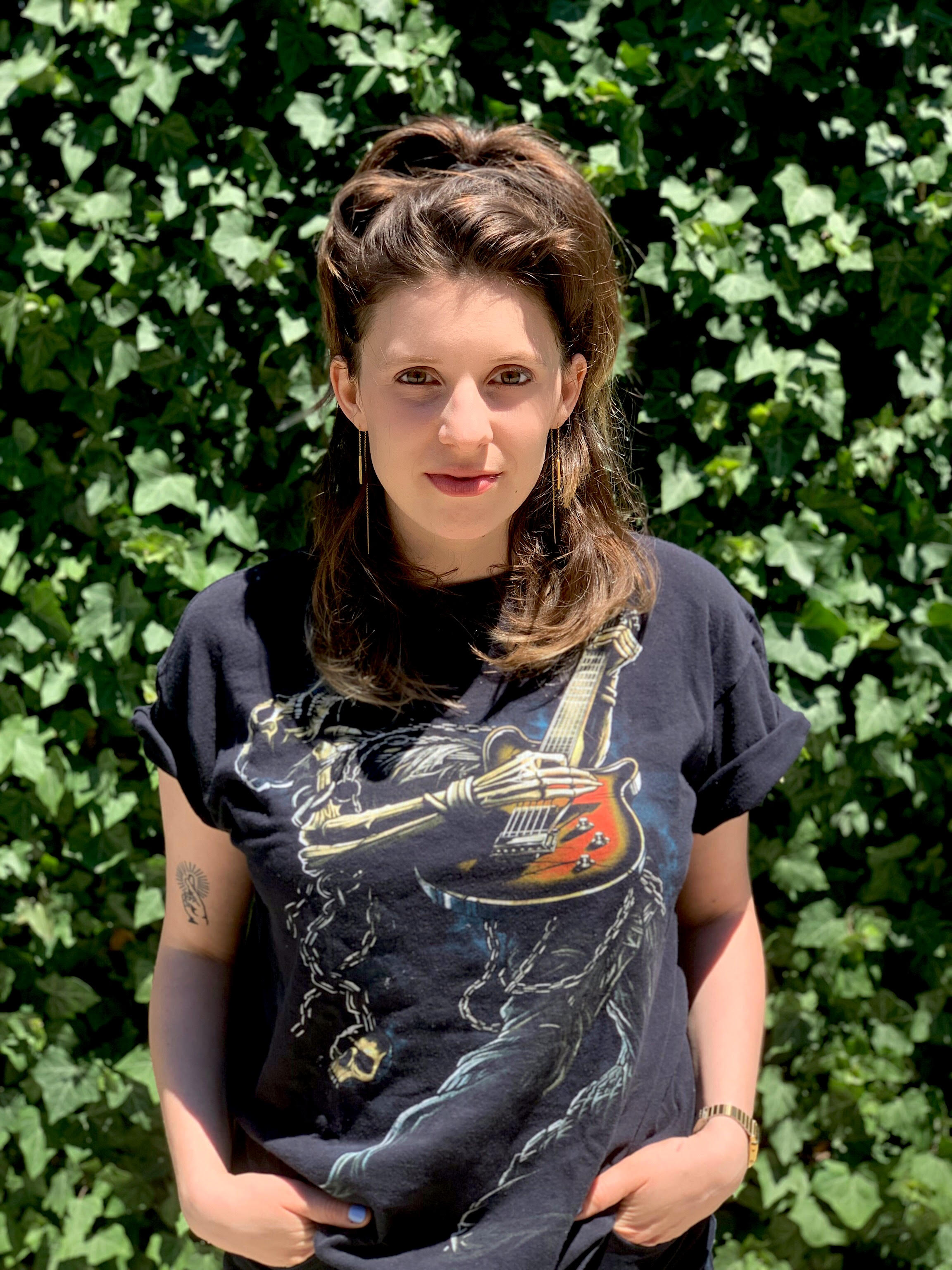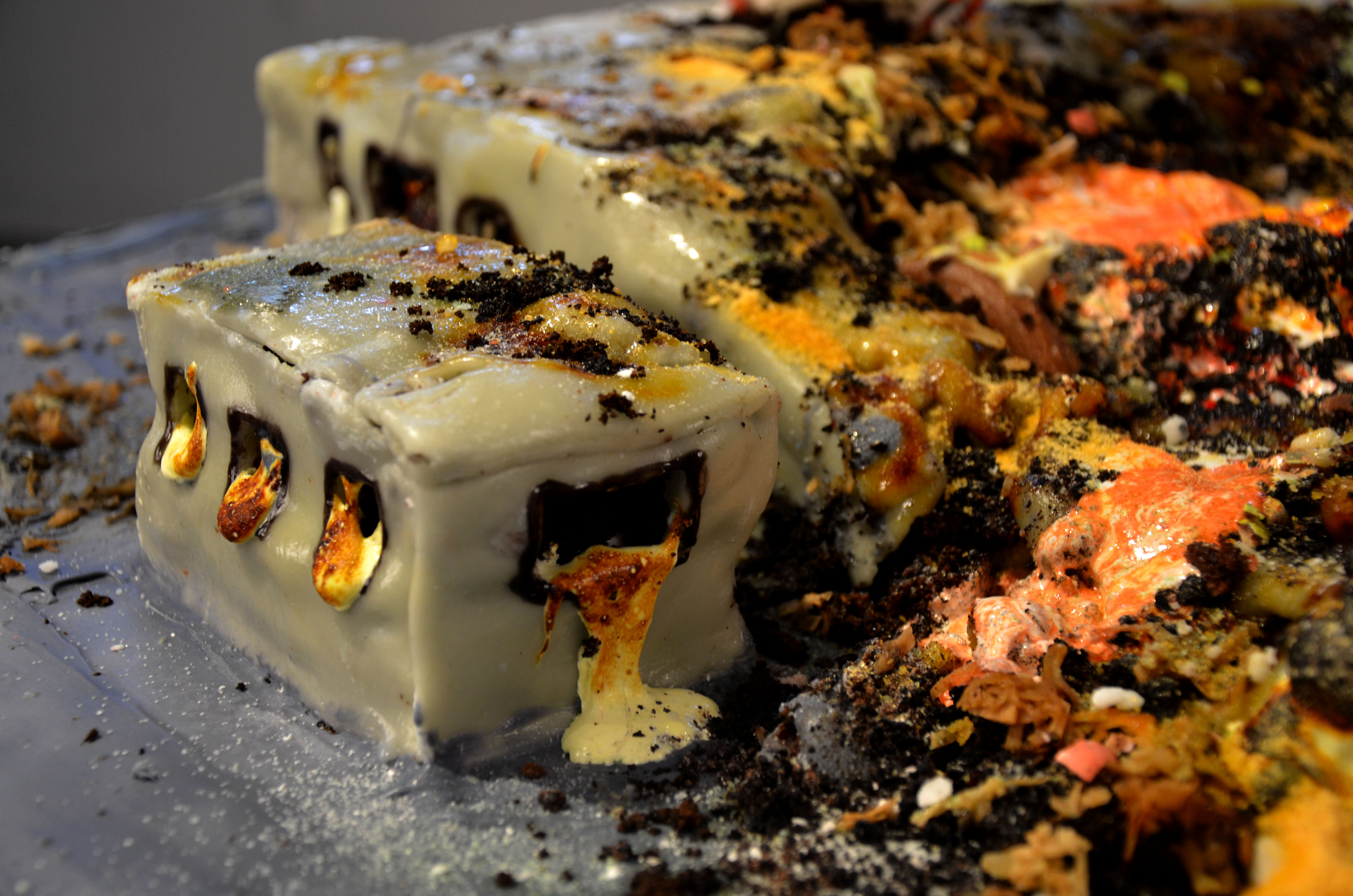Why This Baker Turned Chernobyl and the Oklahoma City Bombing Into Cakes
Credit to Author: Emma Orlow| Date: Mon, 01 Jul 2019 15:32:27 +0000
Paige Heimark is a disaster artist. (No, not the James Franco movie.)
While most of us might take pride in just making a tiered cake that doesn’t topple over or achieving a nice ripple effect with icing, Heimark—who makes art under the name Edible Freaks—uses cake as a way to explore the way trauma has been made consumable in the media through hyper-realistic architectural recreations of horrific, man-made disasters. Using cake as a sugary medium, Heimark creates dessert sculptures of these horrifying historical events as a statement about how they’re commodified into media fodder and consumable forms of popular entertainment.
When HBO’s miniseries Chernobyl premiered in May, Heimark was busy tooling away, designing a cake in memoriam to the worst nuclear accident the world had ever seen, one with rampant, lasting environmental repercussions and devastating health effects. In addition to her disturbingly quaint cake sculpture of Chernobyl, she’s made tweezer-precise recreations of ruins from the Oklahoma City Bombing, the 1995 domestic terrorist attack in which 168 died, including 19 children.
So, why would someone want to create a dessert of these catastrophic moments? Heimark, who got her BFA in sculpture from Penn State University, began experimenting with cakes while working at local Philadelphia bakeries as a side hustle. Making digestible art of man-made disasters can certainly seem to be in bad taste, romanticizing horrific events for the sake of art in what’s known as “ruin porn.” But for Heimark, these cake projects are a vehicle for her anxieties about the direction in which society is headed. As Heimark tells it, “The act of eating gives us a false sense of power to physically destroy the horror that perpetually looms in our subconscious. We eat the beast. It’s an act of mutual destruction, much like the disasters themselves.”
We spoke to Heimark about why baking is sculpting, the worrying appeal of gender reveal cakes, and her favorite serial killers.
MUNCHIES: Hi, Paige. Tell me more about your background; what do you do for a living beyond making custom cakes?
Right now, I work as an office manager. I sell drawings and T-shirts as well. I’m originally from outside of Philly, and now I live in Kensington, Brooklyn.
When did you begin to connect your sculpture background and your work with cake at bakeries?
My first, most immediate connection was how tactile they both are. You’re smooshing around goofy materials, knowing they will change form over time, in order to reach an imagined final product. You have to factor in time, temperature, weight. The equipment is also similar. You use a putty knife to smooth icing, just as you would with plaster. You cut dowels for a cake in the same manner (and for the same reason) as you would cut wire for a sculpture armature. There’s also a lot of praying that the thing actually stands up as you want it to.

I liked to see how people reacted to the cakes as well. They got so excited and laughed out loud and took pictures. It’s rare to see that reaction to visual art. I also started to see how the process of baking, building, and decorating a cake can lead to unexpected meaning and interesting questions. I remember cutting a christening cake into the shape of a cross, and wondering if eating it is a form of sacrilege. Why do gender reveal cakes exist, and who buys them? Cakes are often synonymous with celebration, and it’s interesting to notice what we choose to celebrate with cake and what we don’t.
What attracts you to using cake as your medium?
For me, cake is both a fun and practical medium. I’ve always loved to bake because it chills me out, and I really like eating. As an artist, I love to experiment with creating new textures and finding unconventional ways to engage the audience. I moved to New York and had little money or space, but I could afford cake mix and my kitchen had a counter and oven. Practically speaking, it’s cheap, non-toxic, and compostable. It’s also low stakes! It’s just cake! You can bake a new one and eat the first draft.
Can you tell me more about some of the cake sculptures you’ve made?
I’ve made a series of serial killer heads (Aileen Wournos, Dean Corll, Jeffrey Dahmer, and Richard Ramirez). I’ve done several multi-tiered cakes for parties that were decorated with everything from white chocolate centaurs and fondant vaginas to Rice Krispies radio towers and cotton candy fog. I made a cake of AP Mike from [WFMU’s] The Best Show. I love doing cakes based on movies, too—for example, a goblin from Troll 2. One of my recent favorites was of Carrie from Brian DePalma’s Carrie, where friends and I poured warm raspberry sauce all over her while shouting “Plug it up!”
What led to you making your “disaster cakes”? How did you select the particular disasters you thought would be a good fit?
Stories of man-made destruction are as ubiquitous as birthday cake. I choose these disasters because they are stand-alone moments of destruction that encapsulate our deepest cultural anxieties. Using cake, I make the proverbial car crash you can’t look away from, the bad news you can’t help but devour. I take familiar indulgences and distort them into repulsive forms; the viewer confronts simultaneous desire and disgust. The viewer is complicit in eating up the horror stories we’re told by the media and the government.
I choose the disasters intentionally. Personally, they are the real-life horror stories I grew up on. But on a larger cultural scale, although they come from completely different historical contexts, they’re both dreams turned into nightmares: For Chernobyl, the collective dream of harnessing nuclear power to transform the Ukrainian SSR; for the Oklahoma City Bombing, Timothy McVeigh perverted his belief of “freedom of expression” into freedom to kill in order to make a point. Both of these disasters led to horrific, long-lasting trauma for an entire nation (the largest nuclear meltdown in history, the most deadly attack on American soil at the time).

Has anyone ever take offense to the disaster cakes?
I’ve never been straight-up confronted by someone that thinks what I’m making is wrong, but I’ve definitely had some negative reactions. One time I told a guy I was making an OKC cake; he said, “Ooof,” and asked me very specific questions about the bombing. I think he was looking for me to be uninformed about the history of the disaster, which would mean I didn’t understand the actual atrocity—like, if I had fully grasped the horror of that day then I wouldn’t be doing what I was doing. The history and context of the disaster is very much a part of my thought process, but I can understand why he would be offended. A lot of people think making disaster cakes is in very bad taste, but I’m OK with doing things in bad taste.
Any more disaster cakes or other creepy ones you’re looking to make soon?
Yes! I hope to do an Exxon Valdez [oil spill] cake soon, and maybe Pompeii or Mount St. Helens. I’d also love to do a full body cake of John Wayne Gacy in his Pogo the Clown costume.
Thanks for speaking with us.
This article originally appeared on VICE US.